|
Swann.
VINTAGE POSTERS. Public Auction Sale 2220. Wednesday August 4, 2010 at 2:00 PM.
(Codice BM/0750) In 8° (24 cm) Catalogo d'asta in lingua inglese, 387 splendidi maifesti illustrati a colori, molti a piena pagina. Prezzi in dollari. Brossura editoriale. Ottimo stato. ~~~ SPEDIZIONE IN ITALIA SEMPRE TRACCIATA

|
|
|
Swissair. -
Airline - Swissair flight Zuerich - Tokyo.
Zürich, 1961. Poster - Offset printing. Illustration by Nikolaus Schwabe. 102 x 64 cm.
Referentie van de boekhandelaar : 265DG
|
|
|
Switzerland SUFFRAGE POSTERS
4 Large Swiss Women's Suffrage Posters
Archive of 4 very large female empowerment posters dating from 1944 to 1966. Swiss women's suffrage posters dating 1946 1954 1959 and 1966 each measuring between 30.5 in and 50.5 inches. Women in Switzerland fought a very long battle for suffrage not receiving the right to vote until 1971. All the posters included in this archive demonstrate that women were equally capable to men in the workforce and thus equally deserving and entitled to the rights of citizenship. All 4 posters in very good to fine condition. A pictorially stunning set.<br/><br/>1. Swiss Women's Suffrage: Vote Yes posters. c. 1946. Very large original Swiss women's rights suffrage poster depicting three Strong women marching with purpose in front of three men. In German it states "Women's Rights: Yes. Same Duty Same Right." Impressive size 35.5" x 50.5." Very good condition. <br/><br/>2. Swiss Women's Suffrage: Vote Yes posters. Februar 20-21 1954. Very large original Swiss women's rights suffrage poster depicting a cheerful young boy stating in German "My mother is going to vote." Very large. 35.5" x 50.5." Very good condition. <br/><br/>3. Swiss Women's Suffrage: Vote Yes posters. c. 1959. Very large original Swiss women's rights suffrage poster depicting a Gentlemen with lipstick on his cheek voting yes for women's rights. Above him in German "Women's Rights." Impressive. 35.5" x 50.5." In very good condition.<br/><br/>4. Swiss Women's Suffrage: Vote Yes posters. c. 1966. Very large original Swiss women's rights suffrage poster depicting a knight with a rose in his mouth voting in favor of the introduction of women's voting rights at the cantonal level. The poster states in German "We Baslers are chivalrous and agree for our women." Very large. 35.5" x 50.5." Very good condition. unknown books
Referentie van de boekhandelaar : 15976
|
|
|
Swolfs:
Couverture DBD.
Affiche au format 30 x 40 cm., à l'état de neuf.
Referentie van de boekhandelaar : 3100
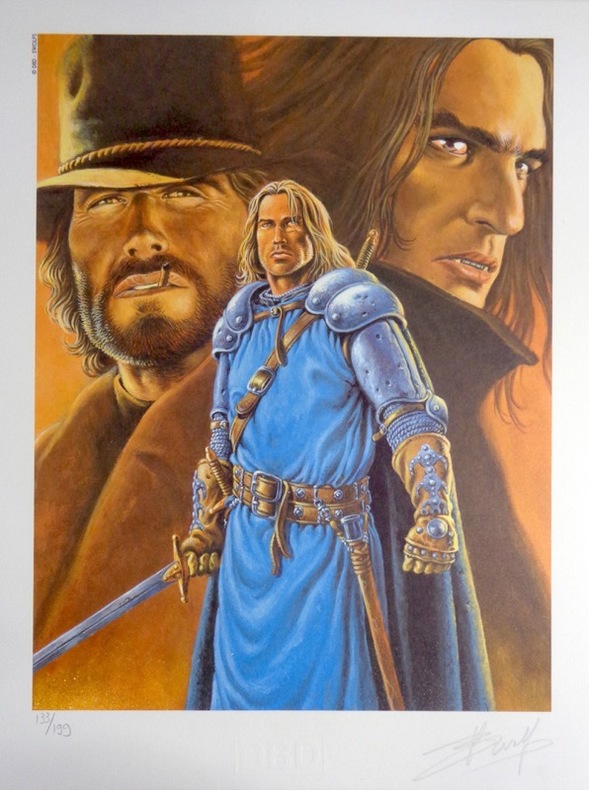
|
|
|
SYLVESTER STALLONE - BILLY DEE WILLIAMS
AFFICHE DE CINEMA - LES FAUCONS DE LA NUIT
BRUCE MALMUTH. 1981. In-12. Broché. Bon état, Couv. convenable, Dos satisfaisant, Intérieur frais. 11 photos de présentations 21 x 27cm.. . . . Classification : 0-Affiches Cinéma
Referentie van de boekhandelaar : R100000488
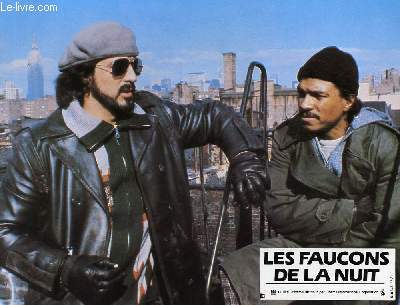
|
|
|
SYLVESTRE (Ysraël).
Profil de la Ville de Rouen.
Israël Sylvestre en bas à gauche, Cum privilegio Regis à droite, s.d. (circa 1650). Grande vue (590 x 350 mm) sur vergé fort, trace de pliure au centre, bon état.
Referentie van de boekhandelaar : 19842

|
|
|
SYNDICAT MAISON VERGER DELPORTE
CONTRE LA RÉPRESSION PATRONALE - ORGANISONS LA LUTTE
Affiche originale. 1968. Impression en sérigraphie. Dim : 709 x 487 mm.
Referentie van de boekhandelaar : 3860

|
|
|
SYNDICAT MAISON VERGER DELPORTE
CONTRE LA RÉPRESSION PATRONALE - ORGANISONS LA LUTTE
Affiche originale. 1968. Impression en sérigraphie. Dim : 709 x 487 mm.
Referentie van de boekhandelaar : 3860

|
|
|
Szczesny, Stefan
Szczesny. 1997 [Signiertes Original-Plakat, Offsetdruck / signed original poster, offsetprint].
o.J. [2 Warenabbildungen] Stefan Szczesny, geboren am 9. April 1951 in München. Deutscher Maler, Bildhauer und Fotograf, wurde in den 1980er Jahre
Referentie van de boekhandelaar : 15296DB

|
|
|
SZEMBERG Henryk, MROSZCZAK Jozef, PENCIAK Boreslaw
Plakat Polski.
Warszawa: Wydawnictwo Artystyczno-Graficzne RSW "Prasa", 1957 in-4, 190 pages, 234 reproductions d'affiches polonaises dont certaines en couleurs, avec notices biographiques de 31 affichistes. Reliure toile.
Referentie van de boekhandelaar : 1241654
|
|
|
Ségolène Le Men
Jules Chéret : Le Cirque et l'Art forain
Somogy 2002 In-8 relié 24,8 cm sur 17,8. 63 pages. Très bon état d’occasion.
Referentie van de boekhandelaar : 64412
|
|
|
Ségur Thierry:
Le roi des méduses. Affiche.
Affiche au format 50 x 70 cm., à l'état de neuf.
Referentie van de boekhandelaar : 2866
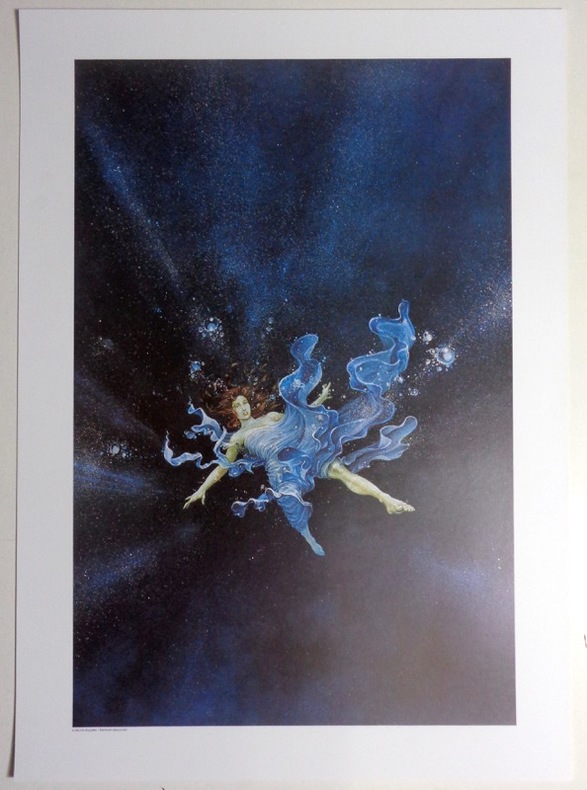
|
|
|
Séguéla.
Séguéla. Affiche éditée à l'occasion de l'exposition à la "Galerie Marc Polony" du 22 novembre au 4 décembre 1965.
Paris Institut Néerlandais de Paris 1966 1 Une affiche de dimensions 47 x61,5 cm; lithographie de Mourlot.
Referentie van de boekhandelaar : 15796
|
|
|
Séguéla.
Séguéla. Affiche éditée à l'occasion de l'exposition à la "Galerie Marc Polony" du 22 novembre au 4 décembre 1965.
Une affiche de dimensions 47 x61,5 cm; lithographie de Mourlot. Discrètes rousseurs en marge, sinon bel état; Voir photo. Peu fréquente.
|
|
|
TADANORI YOKOO (né en 1936)
Exposition Hirose Kinzo aux Grands Magasins Seibu à Yokyo.
Tokyo 1970 Affiche Lithographie offset 1035x734mm.Hirose Kinz ( ) (1812–1876), aussi connu sous le nom de Ekin était un peintre japonais de la fin d'Edo, du Bakumaysu et du début de l'ère Meiji. (104313)
Referentie van de boekhandelaar : 104313
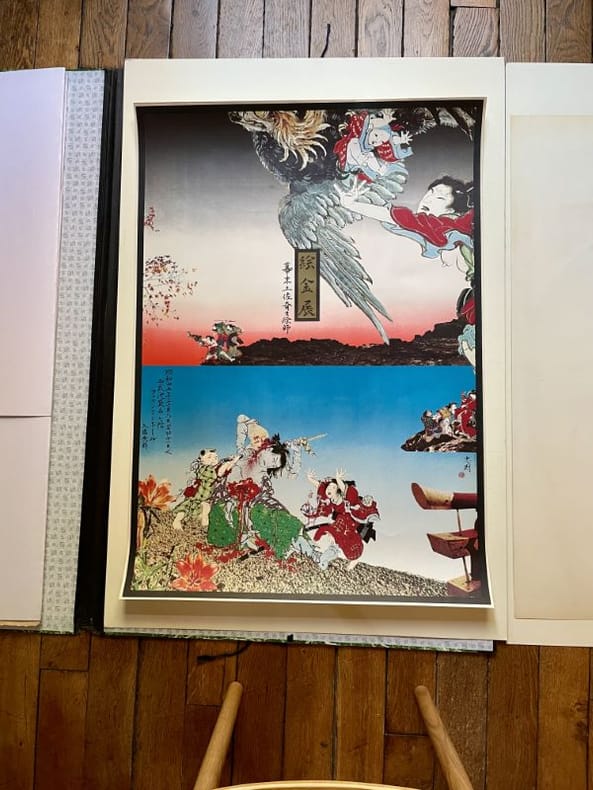
|
|
|
TAILHARDAT
Le vagabond
- 1994, gravure = 11,5x16cm, Encadré. - Epreuve Artiste monotypée. Signée par l'artiste et datée 11/04/94. Encadrement baguette bois doré et Marie-Louise = 32x40cm Le monotype n'est pas une gravure au sens strict, mais une estampe (uvre obtenue après un pressage manuel ou mécanique). Il s'agit de peindre à l'encre typographique (aussi appelée aqualaque) ou à la peinture à l'huile, ou à la gouache, sur un support non poreux, en métal, plexiglas, Rhodoïd. Le monotype ne peut être numéroté, car, comme son nom l'indique, son tirage est unique. [ENGLISH DESCRIPTION ON DEMAND]

|
|
|
Takada Yuzo:
3x3 Eyes.
Affiche au format 88 x 68cm., en très bel état.
Referentie van de boekhandelaar : 3528
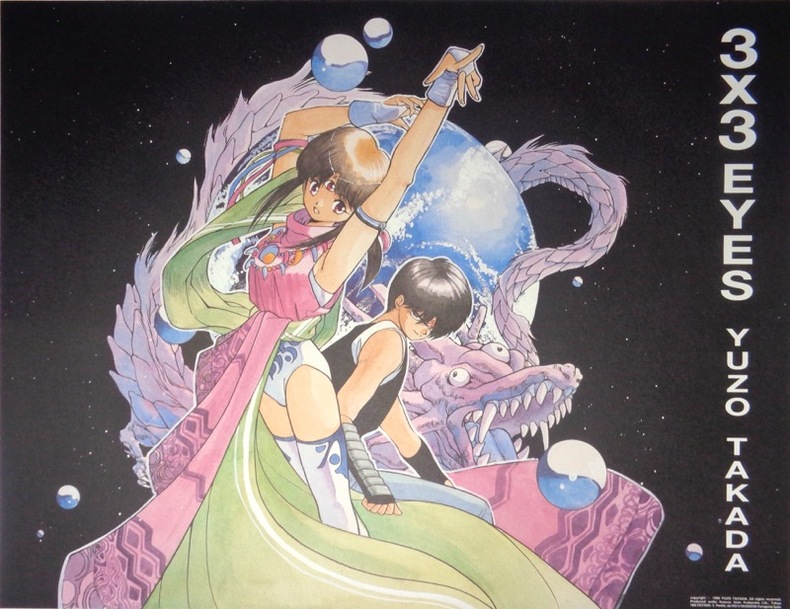
|
|
|
Takahama Kan:
[Portrait].
Affiche au format 50 x 70 cm., à l'état de neuf.
Referentie van de boekhandelaar : 3627
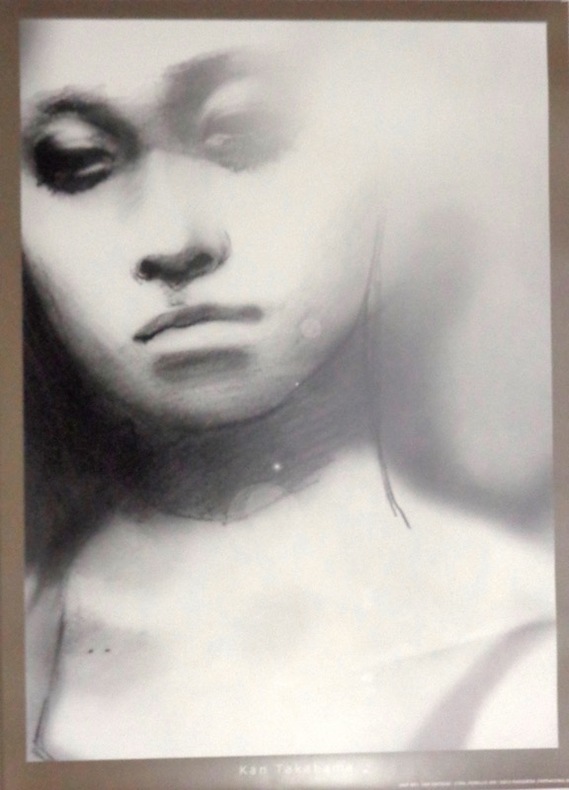
|
|
|
Takahama Kan:
[Portrait].
1000 Editions. Affiche au format 60 x 60 cm, à l'état de neuf.
Referentie van de boekhandelaar : 3598
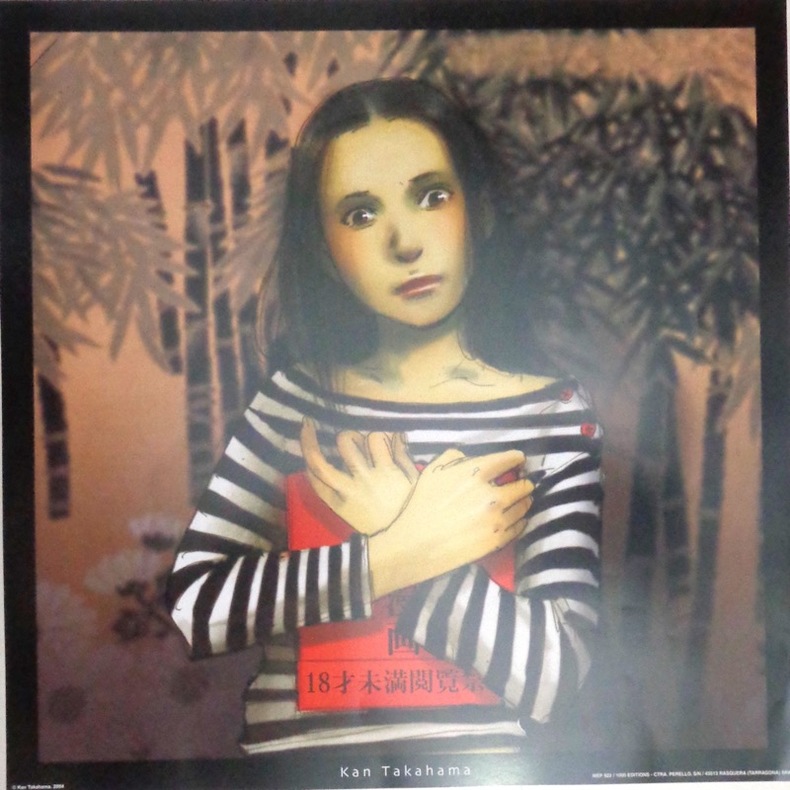
|
|
|
Takeuchi Naoko:
Sailor Moon VI.
Affiche au format 50 x 70cm., en très bel état.
Referentie van de boekhandelaar : 3527
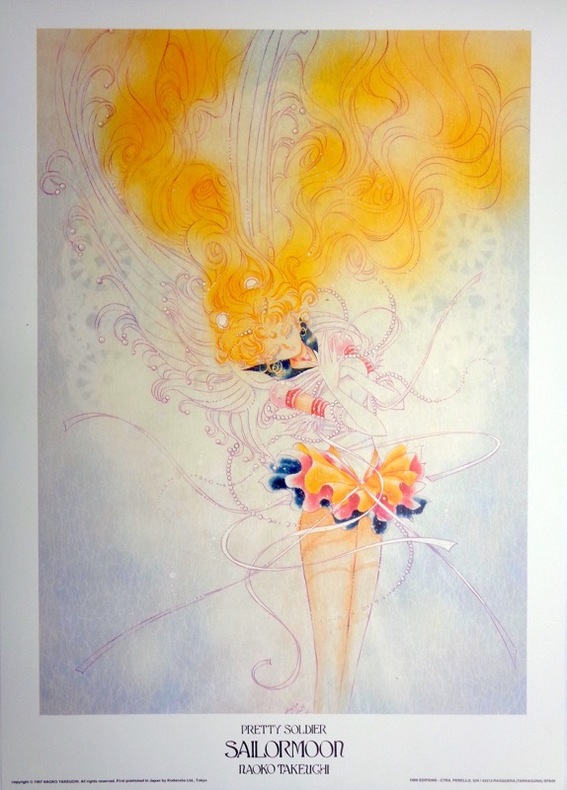
|
|
|
Takis
Takis, N 8. [Plakat / Poster] Galerie Maeght, Paris, 19 novembre 1981 - 22 janvier 1982.
Paris., Galerie Maeght., 1981. 73 x 48 cm., 650E Ränder leichte Knickspuren, sonst sehr gutes Exemplar.
Referentie van de boekhandelaar : 650EB

|
|
|
Takis (d. i. Panagiotis Vasilakis )
Takis. Galerie Maeght 1981. [Plakat, Offsetdruck / poster offset print].
o.J. Takis, bürgerlicher Name Panagiotis Vasilakis , geboren 1925 in Athen. Bildhauer und kinetischer Künstler.
Referentie van de boekhandelaar : 54870BB

|
|
|
Talbot Bryan:
The tale of one bad rat.
Affiche au format 68 x 98 cm., à l'état de neuf.
Referentie van de boekhandelaar : 3688
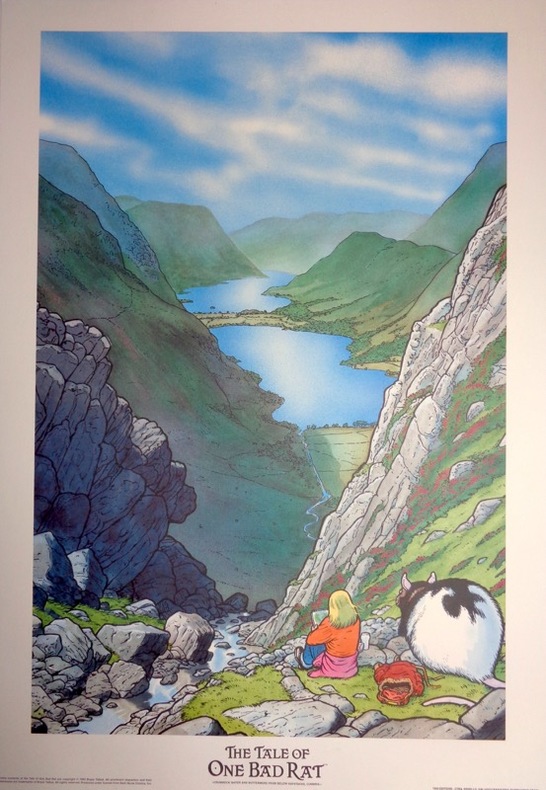
|
|
|
Tallien Jean Lambert Zollikofer de Sonnenberg J. C Imprimerie des Petites Affiches Paris publisher
Encore quelques mots sur la Garde nationale. 1797 Leather Bound
2019. Leather Bound. New. Leather Binding on Spine and Corners with Golden Leaf Printing on round Spine. Reprinted in 2019 with the help of original edition published long back 1797. This book is printed in black & white sewing binding for longer life Printed on high quality Paper re-sized as per Current standards professionally processed without changing its contents. As these are old books we processed each page manually and make them readable but in some cases some pages which are blur or missing or black spots. If it is multi volume set then it is only single volume if you wish to order a specific or all the volumes you may contact us. We expect that you will understand our compulsion in these books. We found this book important for the readers who want to know more about our old treasure so we brought it back to the shelves. Hope you will like it and give your comments and suggestions. Lang: - fre Pages 10. EXTRA 10 DAYS APART FROM THE NORMAL SHIPPING PERIOD WILL BE REQUIRED FOR LEATHER BOUND BOOKS. FOLIO EDITION IS ALSO AVAILABLE. hardcover
Referentie van de boekhandelaar : LB1111008427418
|
|
|
Tamburini Stefano:
Donna in pelliccia.
FRIGIDAIRE, 1984. Affiche au format 68 x 98. Infime trace de pli.
Referentie van de boekhandelaar : 3639
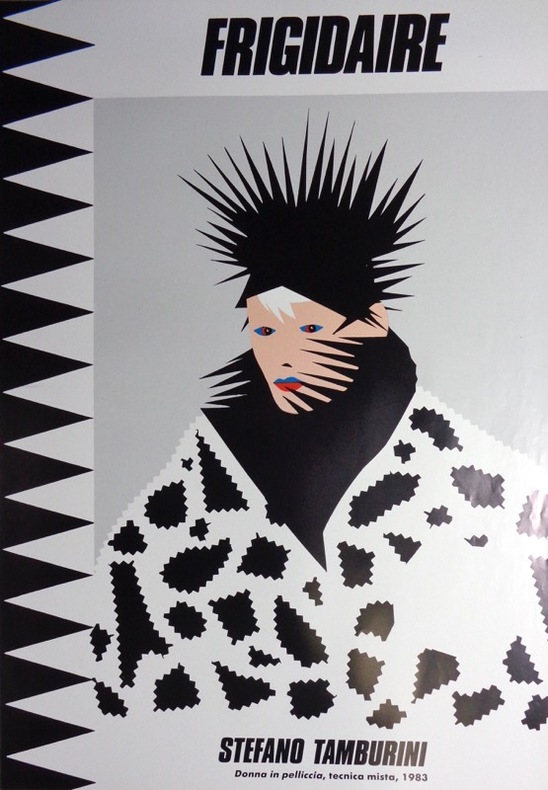
|
|
|
TAMENAGA SHOUNSHOUI
I CAVALIERI DELLA MORTE
romanzo storico giapponse AFFICHE ORIGINALE éditée vers 1880-1890 format : 76 x 112 cm (plus un bandeau de 8 cm de haut annonçant une représentation à Turin collé en bas) Mise en scène sous forme d'opéra d'un roman du japonais TAMENAGA SHOUNSHOUI dessin de TAVIO Lithographie de E. PERINO marques de plis et d'un cachet de taxe sinon bel état de fraicheur des couleurs pas de déchirure, pas de manque pour cette très rare affiche. l'affiche n'est pas entoilée
Referentie van de boekhandelaar : 90

|
|
|
Tamayo Rufino:
Perro ladrando a la luna.
Affiche au format 68 x 96 cm., à l'état de neuf - et moins trouble que sur la photo !
Referentie van de boekhandelaar : 3115
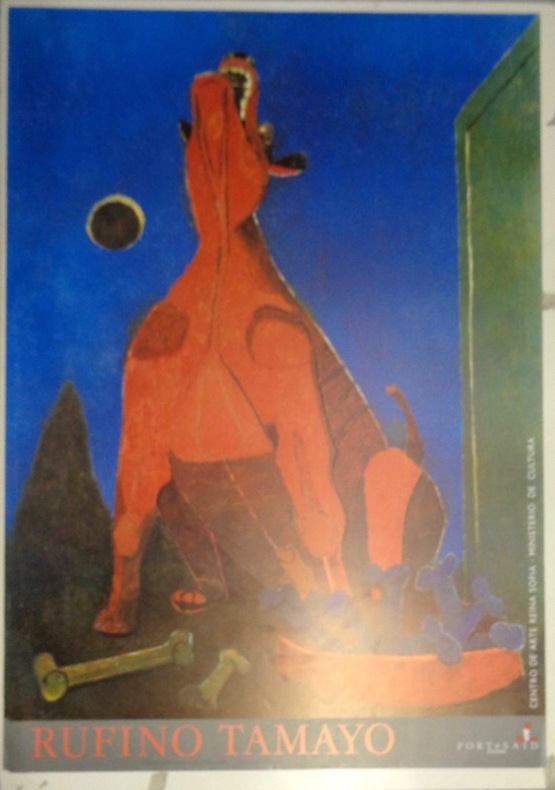
|
|
|
TANAKA IKKO (1930-2002)
Art japonais d'aujourd'hui
Affiche Paris, Musée Cernuschi 7 mars-12 avril 1970, 720x530mm. (104315)
Referentie van de boekhandelaar : 104315
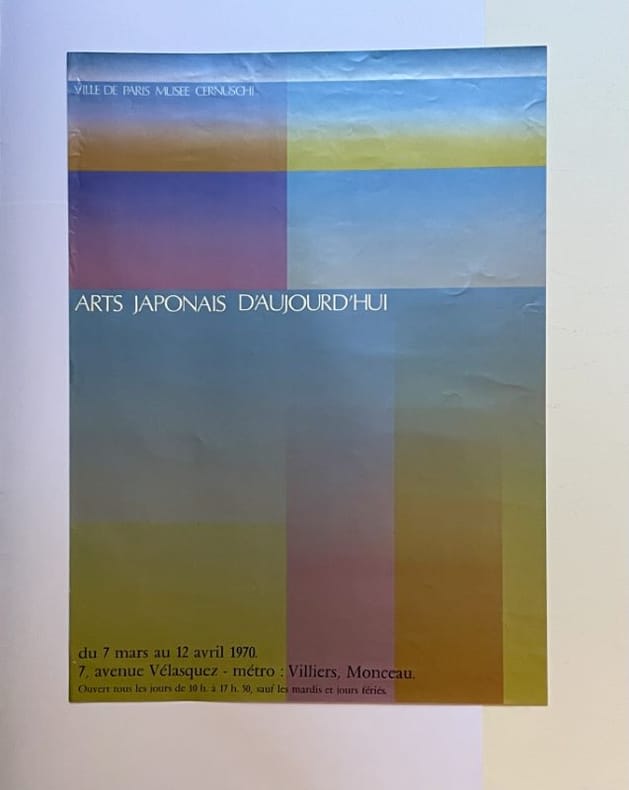
|
|
|
Tanguy Ottomer
Elixir d'Anvers Het verhaal - The Story
, Luster uitgeverij, 2022 Hardcover, 192 Pages, 23x29cm, Illustrated. Text in NL/ENG. ISBN 9789460583261.
Referentie van de boekhandelaar : 60033
|
|
|
Tanner (Alain)
Jonas qui aura 25 ans en l'an 2000.
français Sans date (1976). Affiche originale du film. 120x160 cm. Pliée.
|
|
|
TAPIES:
Objets et grands formats. Galerie Maeght.
Paris, Arte, Lithographie 51 x 79,5. Arte, Paris Art.
Referentie van de boekhandelaar : 8109
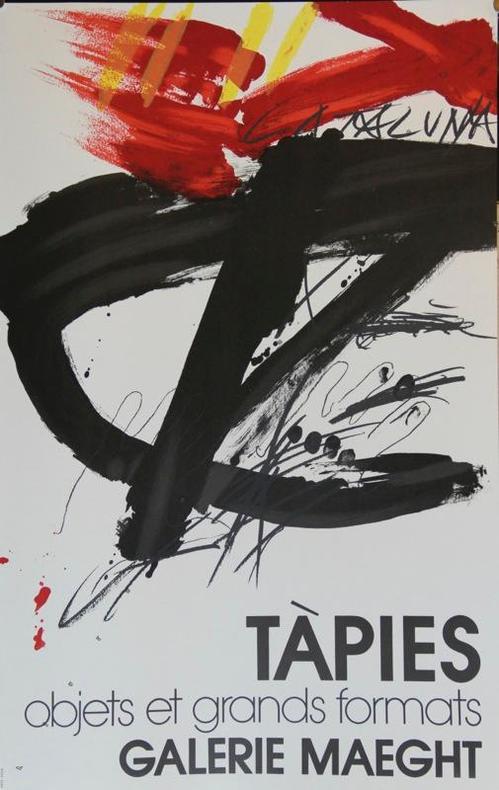
|
|
|
Tapies, Antoni - Nuria Enguita Mayo
Els cartells de Tapies/ L'Esfera Publica.
Barcelona. Valencia., Fundacio Antoni Tapies Barcelona. Museu Valencia de la Ill-Lustracio., 2006. 28 x 22 cm. 209 S., 2 Blatt. Illustrierter OKarton mit Klappenumschlag., 16130D Erste Auflage. Sehr gutes Exemplar.
Referentie van de boekhandelaar : 16130DB

|
|
|
Tapies, Antoni (1923-2012)
Plakat "Universitat Illes Balears". Lithographie.
1988. 65,5 x 51 cm (25,8 x 20,1 in). Einriss am Oberrand ca. 4 cm.
Referentie van de boekhandelaar : 151426
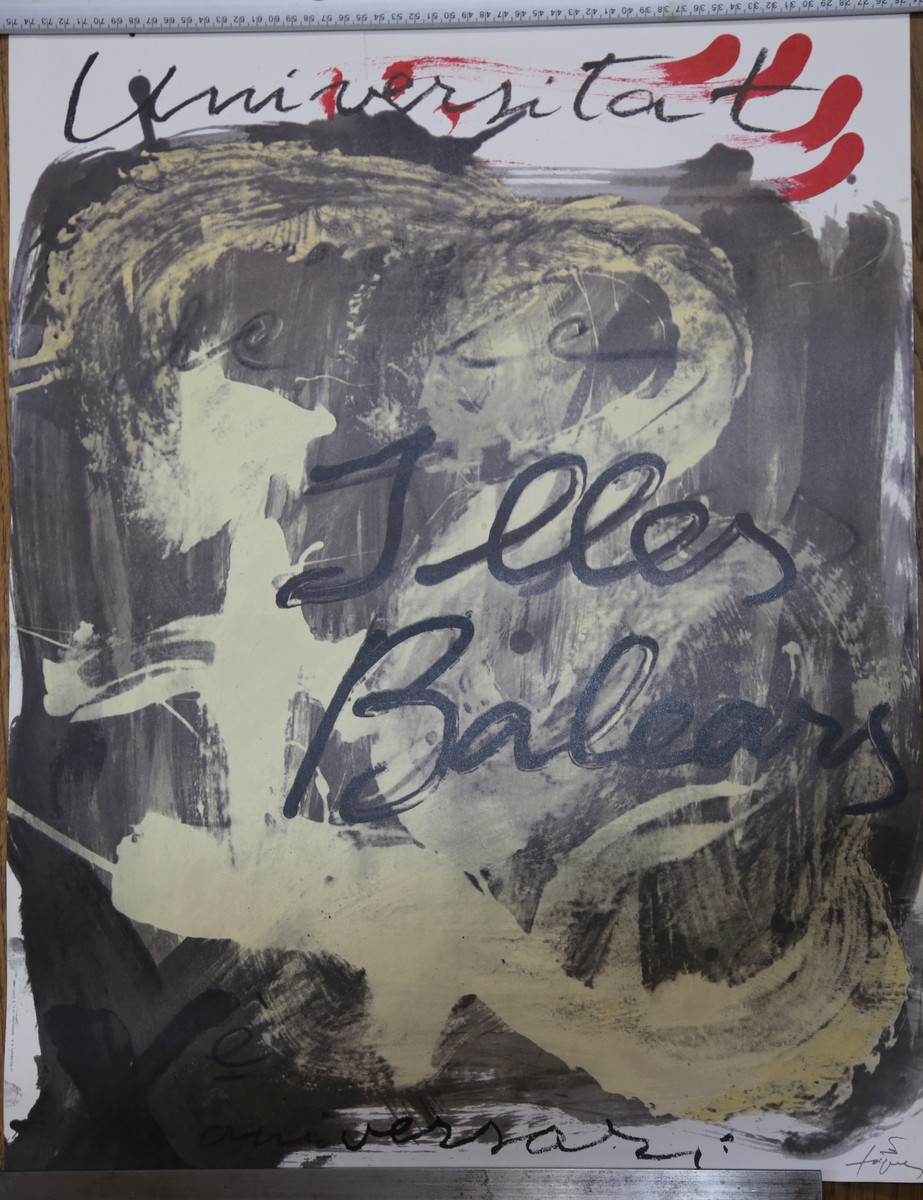
|
|
|
Tapies, Antonio
encres et vernis. [Plakat / Poster] Galerie Maeght, Paris, 3 juin-30 juillet 1982.
Paris., Galerie Maeght., 1982. 87,5 x 60 cm., 736E Gutes bis sehr gutes Exemplar.
Referentie van de boekhandelaar : 736EB

|
|
|
TAQUOY Maurice
Les Propos désobligeants. Tenue pour le Concours Hippique (pl.33, La Gazette du Bon ton, 1914 n°4)
- Lucien Vogel éditeur, Paris Avril 1914, 19x24,5cm, une feuille. - Estampe originale en couleur, tirée sur papier vergé, signée en bas à droite de la planche. Gravure originale réalisée pour l'illustration de La Gazette du bon ton, l'une des plus belles et des plus influentes revues de mode du XXème siècle, célébrant le talent des créateurs et des artistes français en plein essor de l'art déco. Célèbre revue de mode fondée en 1912 par Lucien Vogel, La Gazette du bon ton a paru jusqu'en 1925 avec une interruption durant la Guerre de 1915 à 1920, pour cause de mobilisation de son rédacteur en chef. Elle se constitue de 69 livraisons tirées à seulement 2000 exemplaires et est illustrée notamment de 573 planches en couleurs et de 148 croquis représentant des modèles de grands couturiers. Dès leur parution, ces luxueuses publications « s'adressent aux bibliophiles et aux mondains esthètes » (Françoise Tétart-Vittu « La Gazette du bon ton » in Dictionnaire de la mode, 2016). Imprimées sur beau papier vergé, elles utilisent une police typographique spécialement créée pour la revue par Georges Peignot, le caractère Cochin, repris en 1946 par Christian Dior. Les estampes sont réalisées grâce à la technique du pochoir métallique, rehaussées en couleurs et pour certaines soulignées à l'or ou au palladium. L'aventure commence en 1912 lorsque Lucien Vogel, homme du monde et de la mode - il a déjà participé à la revue Femina - décide de fonder avec sa femme Cosette de Brunhoff (sur de Jean, le père de Babar) la Gazette du bon ton dont le sous-titre est alors « Art, modes et frivolités ». Georges Charensol rapporte les propos du rédacteur en chef : « En 1910, observe-t-il, il n'existait aucun journal de mode véritablement artistique et représentatif de l'esprit de son époque. Je songeais donc à faire un magazine de luxe avec des artistes véritablement modernes [...] J'étais certain du succès car pour la mode aucun pays ne peut rivaliser avec la France. » (« Un grand éditeur d'art. Lucien Vogel » in Les Nouvelles littéraires, n°133, mai 1925). Le succès de la revue est immédiat, non seulement en France, mais aussi aux Etats-Unis et en Amérique du Sud. À l'origine, Vogel réunit donc un groupe de sept artistes : André-Édouard Marty et Pierre Brissaud, suivis de Georges Lepape et Dammicourt ; et enfin ses amis de l'École des beaux-arts que sont George Barbier, Bernard Boutet de Monvel, ou Charles Martin. D'autres talents viennent rapidement rejoindre l'équipée : Guy Arnoux, Léon Bakst, Benito, Umberto Brunelleschi, Chas Laborde, Jean-Gabriel Domergue, Raoul Dufy, Édouard Halouze, Alexandre Iacovleff, Jean Émile Laboureur, Charles Loupot, Maggie Salcedo. Ces artistes, inconnus pour la plupart lorsque Lucien Vogel fait appel à eux, deviendront par la suite des figures artistiques emblématiques et recherchées. Ce sont ces mêmes illustrateurs qui réalisent les dessins des publicités de la Gazette. Les planches mettent en lumière et subliment les robes de sept créateurs de l'époque : Lanvin, Doeuillet, Paquin, Poiret, Worth, Vionnet et Doucet. Les couturiers fournissent pour chaque numéro des modèles exclusifs. Néanmoins, certaines des illustrations ne figurent aucun modèle réel, mais seulement l'idée que l'illustrateur se fait de la mode du jour. La Gazette du bon ton est une étape décisive dans l'histoire de la mode. Alliant l'exigence esthétique et l'unité plastique, elle réunit pour la première fois les grands talents du monde des arts, des lettres et de la mode et impose, par cette alchimie, une toute nouvelle image de la femme, élancée, indépendante et audacieuse, également portée par la nouvelle génération de couturiers Coco Chanel, Jean Patou, Marcel Rochas... Reprise en 1920 par Condé Montrose Nast, la Gazette du bon ton inspirera largement la nouvelle composition et les choix esthétiques du « petit journal mourant » que Nast avait racheté quelques années auparavant : le magazine Vogue. [ENGLISH DESCRIPTION ON DEMAND]

|
|
|
Tardi:
Affiche pour Tueur de cafards.
Casterman. Affiche bicolore au format 30 x 80 cm. Pli central d’origine.
Referentie van de boekhandelaar : 788

|
|
|
Tardi Jacques:
Calendrier 1983.
Futuropolis. Calendrier au format 22 x 34 cm., trou de suspension. Quelques rendez-vous notés sur les jours de certains mois, pour le reste en belle condition.
Referentie van de boekhandelaar : 1762
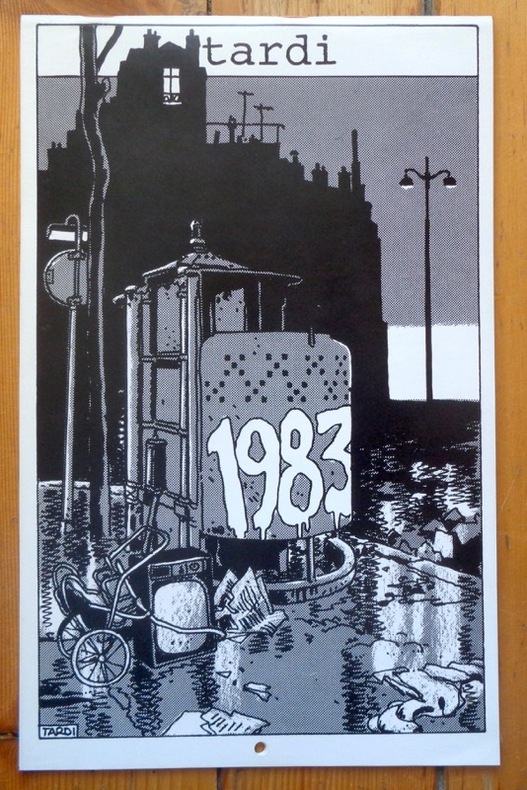
|
|
|
Tardi Jacques:
En banlieue.
Christian Desbois, 1990. Affiche au format 50 x 70 cm., en belle condition.
Referentie van de boekhandelaar : 3375
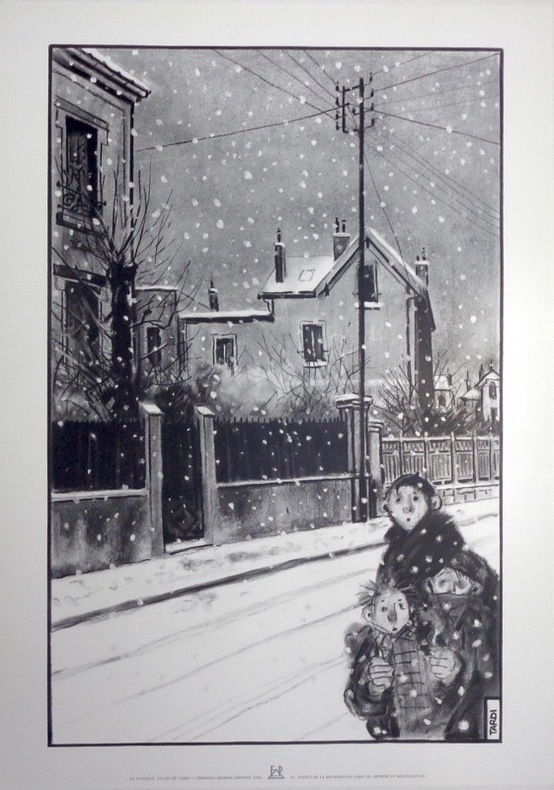
|
|
|
Tardi Jacques:
Fenêtre.
Grande affiche couleurs au format 70 x 50, à l'état de neuf.
Referentie van de boekhandelaar : 1120
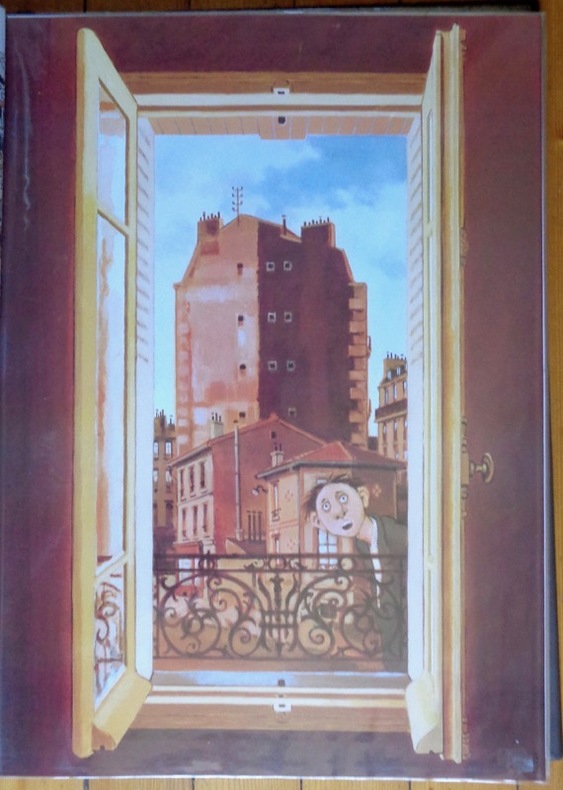
|
|
|
Tardi Jacques, Léo Malet:
Grande sérigraphie numérotée.
Le Pythagore / Le grand jardin, collection vilain velin, 2006. Sérigraphie au format 70 x 50 cm.
Referentie van de boekhandelaar : 279
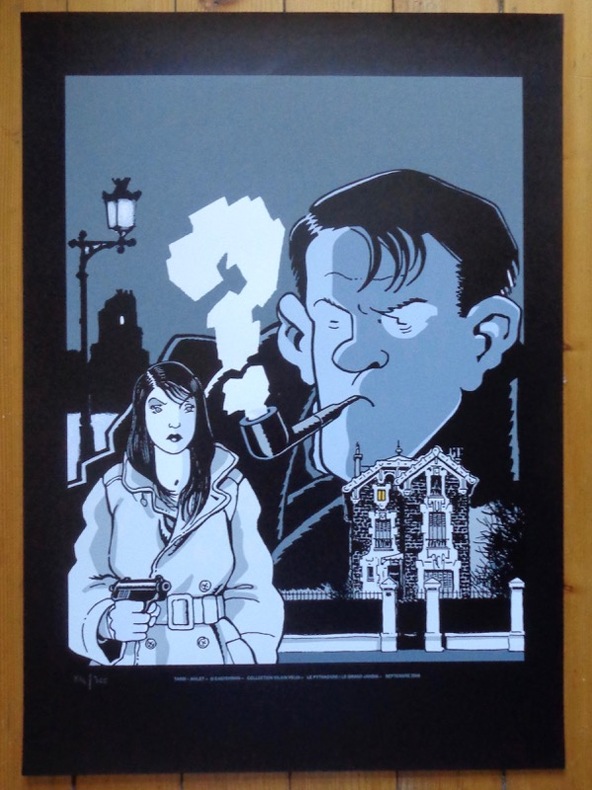
|
|
|
Tardi Jacques:
Le cri du peuple - Mort sur la Barricade.
Affiche au format 40 x 50 cm., avec pli central.
Referentie van de boekhandelaar : 3116
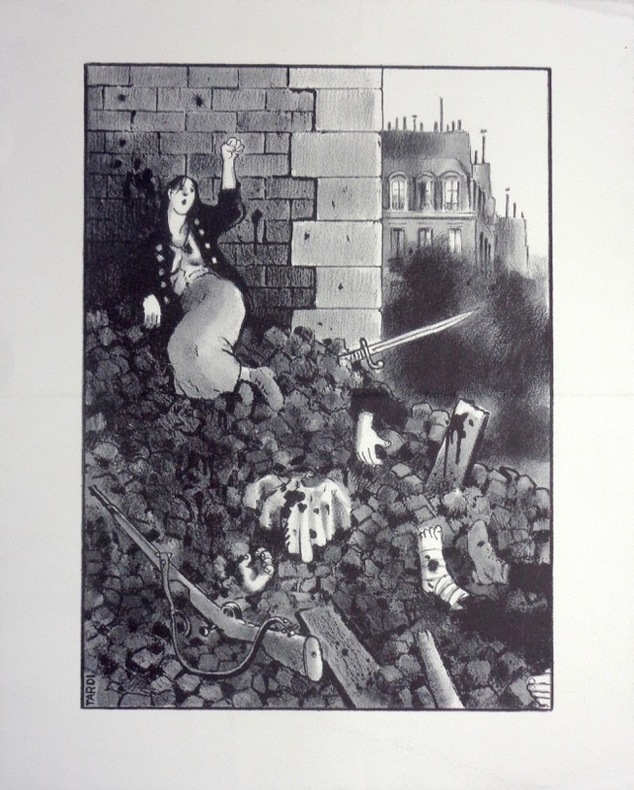
|
|
|
Tardi Jacques:
Nestor Burma dans le 13e arrondissement de Paris.
Christian Desbois éditions. Affiche au format 25 x 50 cm, à l'état de neuf. (Photo: reflet dû au plastique de protection).
Referentie van de boekhandelaar : 1116
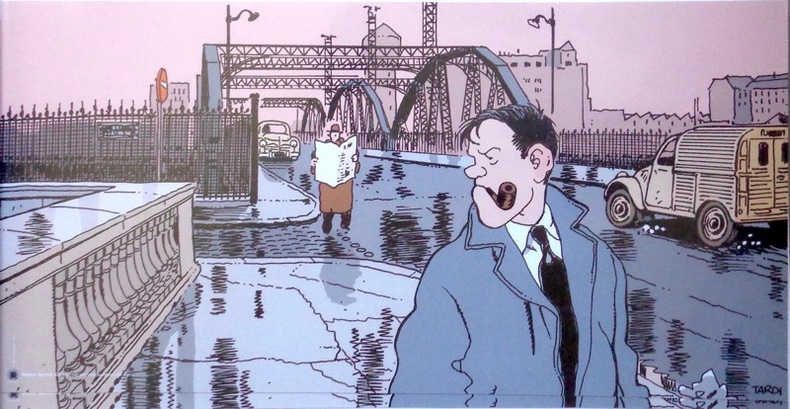
|
|
|
Tardi Jacques:
Nestor Burma dans le 14e arrondissement de Paris.
Christian Desbois éditions. Affiche au format 25 x 50 cm, à l'état de neuf. (Photo: reflet dû au plastique de protection).
Referentie van de boekhandelaar : 1117

|
|
|
Tardi Jacques:
Nestor Burma dans le 3e arrondissement de Paris.
Christian Desbois éditions. Affiche au format 25 x 50 cm, à l'état de neuf. (Photo: reflet dû au plastique de protection).
Referentie van de boekhandelaar : 1118
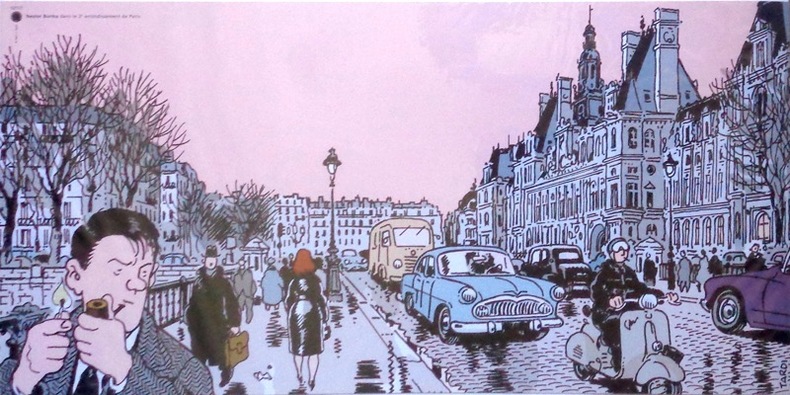
|
|
|
Tardi Jacques:
Nestor Burma dans le 5e arrondissement de Paris.
Christian Desbois éditions. Affiche au format 25 x 50 cm, à l'état de neuf. (Photo: reflet dû au plastique de protection).
Referentie van de boekhandelaar : 1119
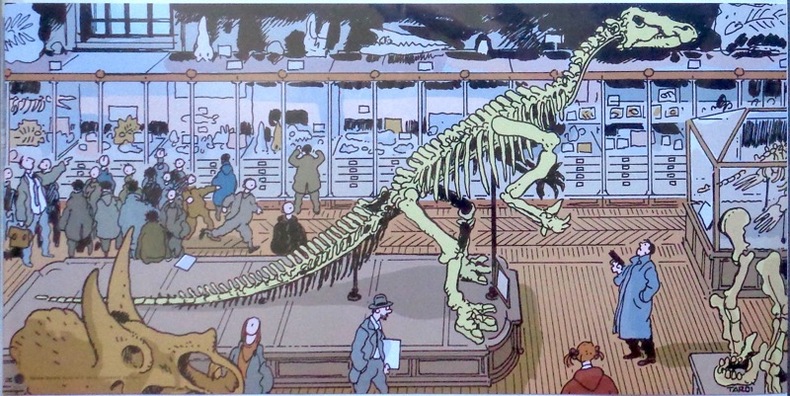
|
|
|
Tardi Jacques:
Sérigraphie diptyque originale très grand format, guerre 14-18.
Paris, Escale, 1985. Diptyique, complet en 2 très grandes sérigarphies originales au format (chacune !) de 84 x 114 cm. Quelques marques, hélas, d'humidité (voir photos).
Referentie van de boekhandelaar : 2260
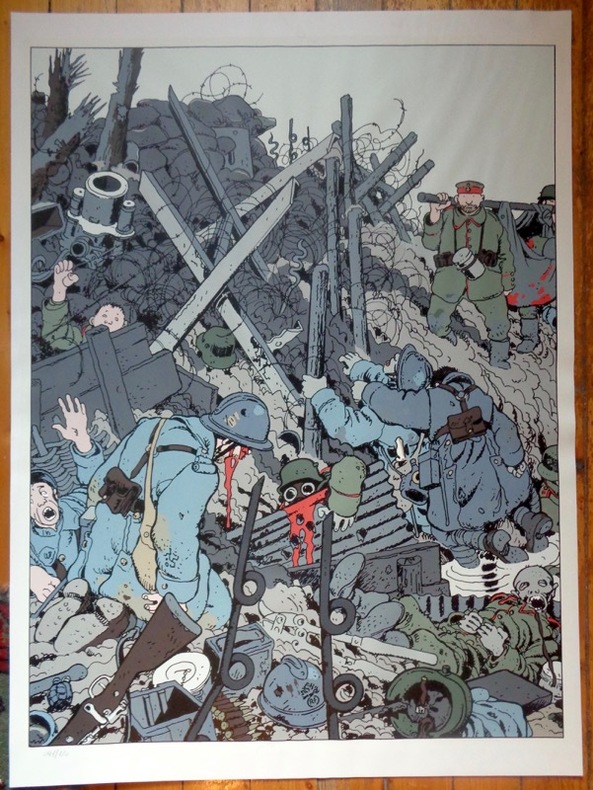
|
|
|
Tardi Jacques:
Tardi - Fusains.
Galerie Escale, Paris / Christian Desbois. Affiche au format 40 x 60 cm., à l'état de neuf.
Referentie van de boekhandelaar : 2869
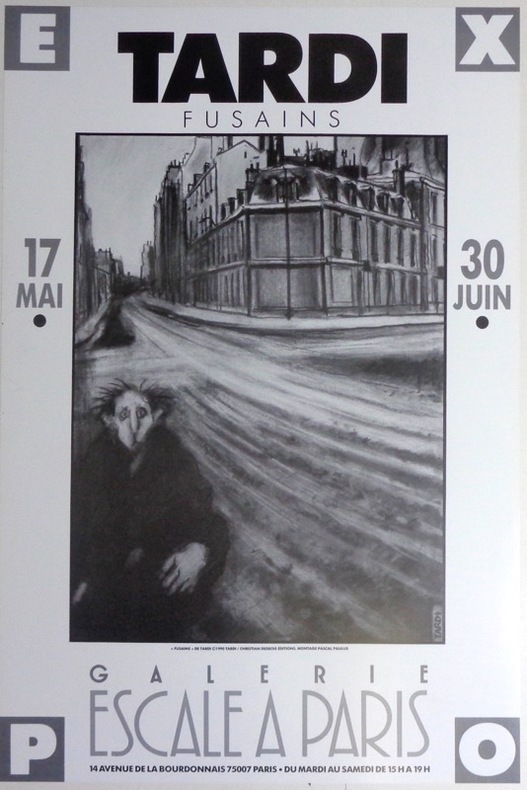
|
|
|
Tardi Jacques:
Tardi - Une expo. Fenêtres.
Christian Desbois. Affiche au format 35 x 50 cm., à l'état de neuf.
Referentie van de boekhandelaar : 3139

|
|
|
TARNAUD Claude
Collage original
- s.d. (circa 1950), Collage : 15x22,5cm / Cadre : 27,7x34,7cm, un collage encadré. - Original collage t[ca 1950] | Collage: 15 x 22.5 cm / Frame: 27.7 x 34.7 cm Original collage by Claude Tarnaud, enhanced with white painting and monogrammed in ink on the bottom right. «With Yves Bonnefoy and Jaroslav Serpan, Claude Tarnaud founded the magazine, La Révolution la nuit. Contacted by André Breton, he then joined the surrealist group and participated actively in the 1947 International Exhibition of Surrealism, and the magazine, Néon, (5 issues from January 1948 to April 1949). In November 1948, after disagreeing with the exclusion of painter Roberto Matta, he broke with the surrealist group, like his friends Victor Brauner, Stanislas Rodanski and others. Next, he was associated with François Di Dio and the management of the magazine, Positions, published by Le Soleil noir, a publishing house to which he gave three books. From 1953 to 1966, he participated in the activities of the Phases movement and collaborated with the magazine of the same name. In 1966, he met Pénélope and Franklin Rosemont who founded the first surrealist group of the United States of America in Chicago.» (Bibliothèque Kandinsky) [FRENCH VERSION FOLLOWS] Collage original de Claude Tarnaud, rehaussé à la peinture blanche et monogrammé à l'encre en bas à droite. "Claude Tarnaud fonde avec Yves Bonnefoy et Jaroslav Serpan la revue La Révolution la nuit. Contacté par André Breton, il rejoint alors le groupe surréaliste et participe activement à l'Exposition internationale du surréalisme de 1947, et à la revue Néon (5 numéros de janvier 1948 à avril 1949). En novembre 1948, en désaccord avec l'exclusion du peintre Roberto Matta, il rompt avec le groupe surréaliste, à l'instar de ses amis Victor Brauner, Stanislas Rodanski et d'autres. Il est ensuite associé avec François Di Dio à la direction de la revue Positions publiée aux éditions Le Soleil noir, maison à laquelle il donnera trois ouvrages. De 1953 à 1966, il participe aux activités du mouvement Phases et collabore à la revue du même nom. En 1966, il rencontre Pénélope et Franklin Rosemont qui fondent à Chicago, grâce à lui, le premier groupe surréaliste des États-Unis d'Amérique." (Bibliothèque Kandinsky)

|
|
|
TATI (Jacques), FERRACCI (René)
TRAFIC. (affiche du film)
WISSOUS LALANDE-COURBET 1971 Affiche en couleurs, 120 x 160cm, pliée, procédé litho. (présence d'une trace d'humidité en bordure , très petits manques de papier en pourtour sur une longueur de 10 cm près de l'angle inférieur gauche, petit trou à l'intersection de 2 pliures). Affiche originale du film de Jacques TATI, sorti en 1971. L'affichiste est René Ferracci (le nom n'a pas été pas mentionné sur l'affiche). RARE
Referentie van de boekhandelaar : 024257
|
|